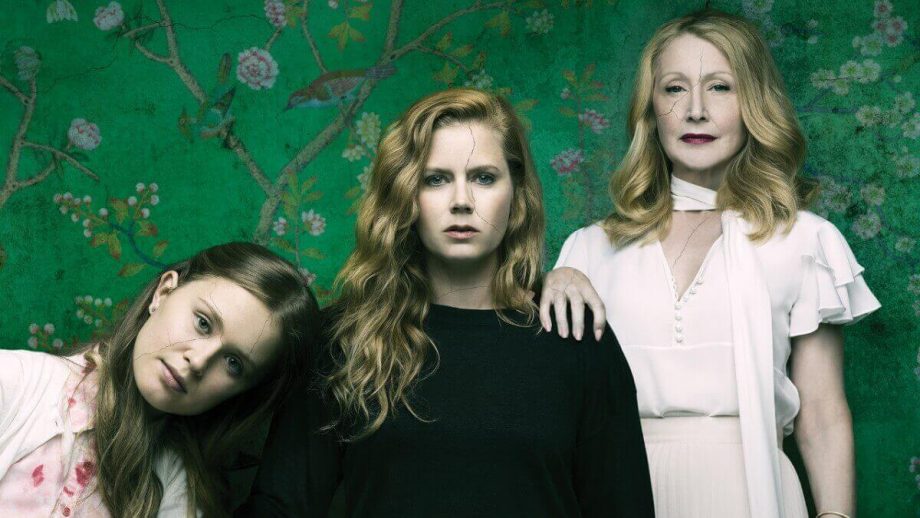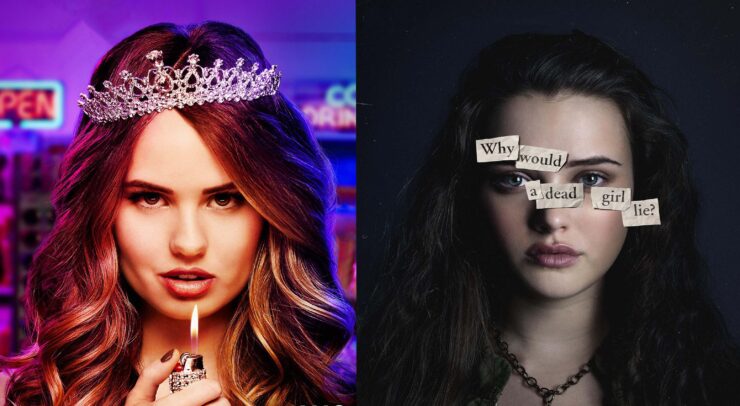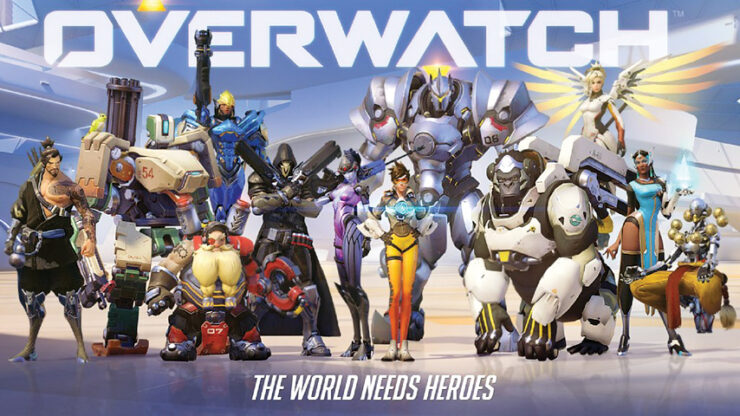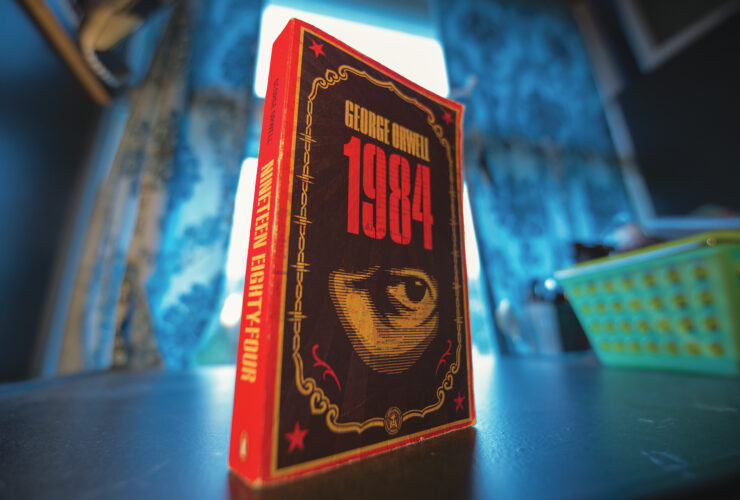The Fulcrum picks our top 10 TV shows of the year
These reviews do not contain spoilers, we promise.
1) Sharp Objects (Season 1, HBO)
When I read Gillian Flynn’s Sharp Objects a few years ago, it didn’t seem like the ideal candidate for a TV show. The book follows journalist Camille Preaker, an alcoholic with severe depression who is tasked with returning to her twisted hometown to follow the murder of two young girls where she must confront her childhood traumas. In a refreshing surprise, it’s one of those true rarities where a TV show actually excels beyond the book it’s based on.
The cinematography is stunning, with hundreds of shots worthy of praise. Music also plays an intricate role, mirroring character’s emotions with ease. Amy Adams shines on screen, crafting a character you’ll feel you’ve known for years.
—Matt Gergyek, Features Editor.
2) The Good Place (Season 3, NBC)
I can’t remember there ever being a sitcom about the philosophy of ethics and morality before. Let alone one that’s so universally accessible, hilarious, and unpredictably heartwarming.
The Good Place is that show and it continues to delight in its third season. Akin to Fight Club, you can’t really talk plot in The Good Place until you finish season one (I urge you to try with all your might to avoid spoilers). In short, the show centres around the afterlives of four flawed, but endearing mortals battling for their eternal souls—well, at least until they hit the end of the loop in Jeremy Bearimy. (This will be extremely witty once you’re caught up with season three).
—Robert Ballantyne, Fulcrum Contributor.
3) Atypical (Season 2, Netflix)
Season two of Atypical is just that. Picking up from the cliffhanger at the end of season one, season two of the Netflix original explores its characters’ relationships in depth, without adding unnecessary drama or filler episodes.
One of the best parts of season two is how well the show depicts a dysfunctional family dynamic. While the show revolves around the main character, Sam, a teenager who falls on the autism spectrum, it doesn’t use his disorder as award bait, or as a punchline. The end of the season leaves viewers both satisfied with the way events unfolded and excited for what’s to come.
—Anchal Sharma, Editor-In-Chief.
4) Haunting of Hill House (Season 1, Netflix)
It’s no secret that many horror movies follow a pretty basic pattern that goes something like this—an unsuspecting group of people move into a haunted house, there are signs that something is wrong, but it is too late to stop it. Rinse and repeat.
However, The Haunting of Hill House offers something different. While the series does contain some of the same plot points as its horror movie predecessors, this 2018 series also encapsulates some of humanity’s most realistic characteristics—and moves away from the overdone scenes of gore that have been mimicked by other movies over the years.
Plus, its avant-garde style also makes for some really good scares.
—Iain Sellers, Arts & Culture Editor.
5) Bojack Horseman (Season 5, Netflix)
Distract yourself from upcoming academic hurdles with a weekend-long existential crisis—no, it’s not a chat with your parents, it’s a binge watch of Bojack Horseman’s fifth season. This series follows a washed-up celebrity horse that struggles to find his own way amid all the money, weird sex, and fame.
The show encourages watchers to take happiness as it comes, rather than equate it with major life gains like winning an Oscar or writing a book. Powerful messages are drawn out through the endlessly flawed ensemble of characters, from the career-anxious outcast Diane, to Mr. Peanutbutter, who happily resigns to absurd social ideals and chases down that nasty mail truck, and hard, heartless career gal Princess Carolyn.
The latest season offers a pointed take on the meaning of good and evil, and how people fall between the categories based on their actions and our perceptions of them. The Diane-Bojack arc also explores the lines between suffering, self-destruction, and reparations for harm done. If you feel like challenging your preconceptions on morality, identity, and growth, this season is for you. But definitely have a big glass of Guten Bourbon and Kleenex in hand—you’ll need it.
—Savannah Awde, Managing Editor.
6) Big Mouth (Season 2, Netflix)
In 2018, after the Ford government announced dramatic changes to the sex ed curriculum, a cartoon comedy became the benchmark educational source for youngsters getting the hang of the birds and the bees. True to its title, Big Mouth doesn’t shy away from the awkwardness of growing up.
Big Mouth follows the lives of a group of teenagers going through the wraiths of puberty, accompanied by the Hormone Monster and Monstress. In season two the show explores contraceptives, safe sex, STIs, gender roles and even edibles, with a handful of laugh-out-loud moments in every episode. “Dark Side of the Boob” is a must see episode, tackling a school sleepover.
—Matt Gergyek, Features Editor.
7) Black Mirror (Season 4, Netflix)
Season four of Black Mirror, a science-fiction anthology featuring a new cast and storyline each episode in a future but not-too-distant reality, perfectly reflected the society-wide anxieties of 2018. Although it was technically released two days before the start of 2018, we’re including it here since most people didn’t get the chance to watch it until this year (unless you binged it on release night like me).
One standout episode for me, actually ranked the lowest of the season by viewers, is episode five, “Metalhead.” Filmed completely in black and white and filled with mesmerizing cinematography, the episode follows a clan of survivors in an apocalyptic world dominated by robotic dogs. “Black Museum” and “USS Callister” are also both must-sees.
—Matt Gergyek, Features Editor.
8) Grace and Frankie (Season 4, Netflix)
Like the previous three seasons, season four of Grace and Frankie brims with plenty of quippy dialogue and situational humour. As usual, the series exposes the humour in aging, same-sex partnerships, and unlikely friendships.
But in this season, Lisa Kudrow joins the cast and her character, Sheree, threatens to wedge Grace and Frankie apart. The prospect of living in an assisted-living facility threatens to steal the pair’s independence. Challenges, like Frankie’s fake death, are hurled across the screen. But Grace and Frankie prevail in what is a hilarious season four of the series.
—Sarah Crookall, News Editor.
9) Making A Murderer (Season 2, Netflix)
On season two of 2015’s hottest documentary, Making A Murderer, we’re thrown back into the legal drama of Wisconsin man Steven Avery and his nephew, Brendan Dassey, convicted of murder and accessory in murder respectively in the killing of photographer Teresa Halbach.
While season one explored the murder itself, hinting at the wrongful convictions of Avery and Dassey, season two explores the aftermath, honing in on the global reaction to the first season and following the crusade of Kathleen Zellner, who now represents Avery in his fight for freedom. Whether you believe Avery and Dassey are guilty or innocent, the show’s almost surreal storyline alone makes it worth the watch.
—Matt Gergyek, Features Editor.
10) Suits (Season 8, USA Network)
When it was announced that Mike Ross and Rachel Zane were leaving Suits at the end of season seven, no one knew what was going to happen. The question on everyone’s mind was, ‘is it even worth the watch?’
Two words: It is. The show very gracefully recognizes its past but also fully embraces a new direction for the future. With the introduction to some new characters and the exploration of the arcs that the older ones take, the show is hell bent on making you fall in love with these characters all over again.
—Oasika Sharma, Staff Contributor.





